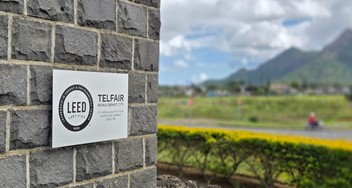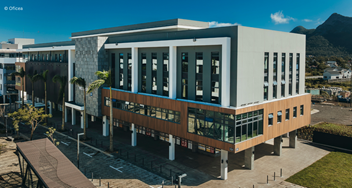Building Information Modeling (BIM) emerged in the construction industry as a revolutionary tool aimed at enhancing the entire lifecycle of a building, from initial design through to long-term operations and maintenance. Conceived with the foresight of improving collaboration and efficiency during the design and construction phases, the true value of BIM becomes most evident in its application to facilities management. This application is critical as the operational phase of a building far outlasts its construction, often spanning several decades. BIM models enrich facilities management by providing detailed, actionable data that can be used for efficient maintenance, strategic asset management, and lifecycle costing. By harnessing BIM for operations, stakeholders can derive ongoing value that significantly exceeds the benefits realized during the shorter periods of design and construction. Thus, BIM’s role in facilitating a more sustainable, manageable, and economically feasible approach to building operations secures its place as a cornerstone of modern construction technology.
In 2020, Prodesign embarked on a significant journey with the Les Fascines project, a major office development spearheaded by Oficea. As the appointed MEP Engineers, our role extended beyond traditional engineering services; we were tasked with harnessing the power of Building Information Modeling (BIM) to deliver both the design and construction stage modeling services. Our efforts culminated in an MEP model delivered at LOD 350, set to transform the conventional construction workflow into a more integrated and digitally driven process. However, despite the advancements in modeling, a pressing challenge emerged: the client wanted to fully capitalize on the renowned benefits of BIM that have been celebrated globally—namely, the ability to efficiently operate and maintain the building. This disconnection between potential benefits and actual application underscored a critical gap in realizing BIM's full value not only in pre-construction and during construction phases, but also in the operational post-construction phase.
The challenges at Les Fascines reflect a broader, global issue where facility management (FM) teams often face difficulties to access the right information quickly and easily for efficient operations and maintenance (O&M) of buildings. Often, essential information is lost or buried in voluminous paper files, leading to frequent bottlenecks. The team found themselves constantly chasing contractors for information, which became a growing concern for the client as the Defects Notification Period was nearing its end. With suppliers and contractors having their obligations to provide support ending, the need for a sustainable solution became urgent. Oficea, recognizing this critical gap and approached Prodesign to explore ways to unlock the full potential of BIM in facilities management.
Our proposal was indeed ambitious: we aimed to elevate both the architectural and MEP models to LOD 500, transforming them into comprehensive tools for facilities management. To achieve this, we meticulously integrated as-built data and metadata from the O&M manuals provided by various contractors into the BIM models. This included manufacturers’ O&M booklets, which provide detailed specifications and maintenance guidelines for each piece of equipment. Additionally, we incorporated troubleshooting instructions to facilitate quick resolution of operational issues, enhancing the efficiency of maintenance processes. Each plant and equipment family within the model was carefully edited and augmented to comply with ISO 19650 standards, the latest framework for managing information over the whole life cycle of a built asset.
This task was not without its challenges. Ensuring that each piece of data adhered to the stringent requirements of ISO 19650 involved a deep dive into the specifics of each equipment and system component represented in the model.
This approach not only ensures that the information is readily accessible but also that it is engaging and easy to understand, empowering maintenance staff to perform their tasks with greater efficiency and confidence. By integrating these diverse forms of data, the models evolved from mere architectural representations into dynamic, actionable tools essential for the day-to-day management and long-term maintenance of the building.
But we didn’t stop there. Understanding the critical importance of ensuring the client and their team could fully leverage this advanced system, Prodesign run a comprehensive five-day training program, approved by the Mauritius Qualifications Authority (MQA). Our BIM Head, Arvind Seebaluck, and BIM R&D Engineer, Karan Sonah, led this in-depth session, sharing their expertise and insights directly with the participants.
The training was specifically tailored to the unique needs and roles of the ENL Property Ltd team which included FM staff, Development and Project Managers deployed on Les Fascines project. The Land Management team of ENL Property Ltd also showed interest in understanding the benefits of BIM and attended the training. Through a series of structured modules, the training covered everything from basic navigation of the BIM environment to complex data retrieval and management tasks on a Common Data Environment (CDE) platform, powered by Catenda Hub. One key feature introduced was the use of a mobile application, Catenda Site, that enables quick access to the 2D/3D model, equipment documentation and raised issues on site. This app connects to the customized CDE platform, providing information to the FM team anywhere, anytime, thus enhancing operational efficiency significantly. In addition, Catenda Duo is a platform designed specifically for building operation and facility management that enables a floor wise segregation of a model. An interesting feature is that it allows the operator to quickly identify the exact location where a maintenance issue has been raised and the asset along with its respective O&M manual, by simply scanning a QR.
Participants were also trained on how to efficiently locate information on any plant and equipment without the need to contact external parties. Additionally, we introduced them to the O&M customized workflows we developed, which streamline the process of assigning tasks to FM staff, monitoring progress, tracking issues, setting reminders, and ensuring timely resolutions with full traceability. These skills are crucial for maintaining high standards of facility management and operational reliability.
The session was interactive, with practical demonstrations and hands-on exercises that allowed attendees to directly engage with the BIM models and the new mobile application. This hands-on approach ensured that each participant not only understood the theoretical aspects of BIM management but could also apply this knowledge practically in their day-to-day operations. By the end of the training, the team was not just familiar with the BIM model but was proficient in leveraging its full potential to ensure efficient management and maintenance of their facilities.
Alvin Harry, Development Manager at ENL Property Ltd, recognised the empowerment of his colleagues and underscored Prodesign’s commitment to not only deliver innovative solutions but also to ensure that they are sustainable and effectively utilized long after our direct involvement ends.
As the curtain falls on the case study of the Les Fascines project, Prodesign's integration of BIM, customized CDE, and tailored workflows has not only met but transcended traditional expectations, setting new benchmarks in facilities management. These tools have empowered the Oficea facilities management team to efficiently manage and maintain their facilities, showcasing how strategic use of technology can transform operations to make buildings smarter and more manageable.
The result? A story of transformation, where challenge led to innovation, and innovation led to empowerment. This is the power of BIM and our custom CDE fully realized, exemplifying how we're building the future, one solution at a time at Prodesign.
Ready to see how our innovative solutions can transform your projects?
Connect with us today to explore the possibilities.





